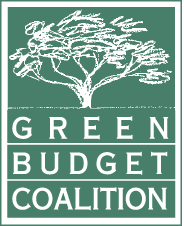DFO’s draft Whalesafe Fishing Gear Strategy sets five objectives to support the transition to whalesafe commercial fishing in Canada:
- Incorporate on-demand fishing gear into priority fisheries to protect North Atlantic Right Whales in Atlantic Canada and Quebec;
- Assess fisheries across Canada to identify fisheries with a high risk of whale interaction and entanglement;
- Incorporate on-demand fishing gear more widely into Canadian fisheries;
- Implement other gear modifications to prevent and alleviate whale entanglement harm; and
- Continue research and gear trials to address knowledge gaps.
Lobster and snow crab are the two largest commercial fisheries in Canada by volume and by value with a combined export value in 2021 of over $5 billion. Implementation of the Whalesafe Fishing Gear Strategy will be a key factor in determining if Canadian snow crab and lobster fisheries meet the U.S. Marine Mammal Protection Act and continue to be allowed to sell to the US market.
Implementing this strategy will also position the snow crab fishery to seek reinstatement of its Marine Stewardship Council (MSC) certification and reopen access to markets for certified seafood products.
As important, it will eliminate a major cause of injury and mortality for marine mammals and sea turtles and remove a primary threat to the highly endangered North Atlantic Right Whale.
Crab and lobster harvesters require support to begin using on-demand fishing gear and other whalesafe gear technologies. On-demand technology is changing fast and is currently unregulated. Harvesters require training in the new technology and low-risk options for accessing the gear, such as gear loan or leasing programs. An extension program to demonstrate gear and train harvesters in the new technology will be central to achieving DFO’s draft objective of incorporating on-demand fishing gear into priority fisheries.
DFO requires departmental capacity, training, and equipment to implement the required regulatory, policy and program component for the use of whalesafe fishing gear. This includes:
- Development of on-demand gear standards and regulations for gear operational requirements;
- Establishment of acoustic gear communication standards;
- Development of gear-marking technology and standards;
- Implementation of on-demand gear permitting using conditions of license;
- Fisheries Officer learning, training, equipment purchase and upgrade; and
- Implementation of a regulatory framework that establishes long-term certainty of fisheries- management measures to protect Right Whales, including the use of on-demand gear-only fishing areas.
Recommended Investment:
$45 million over five years for departmental capacity and harvester support to implement the actions necessary to achieve the objectives of the Whalesafe Fishing Gear Strategy. [DFO]
